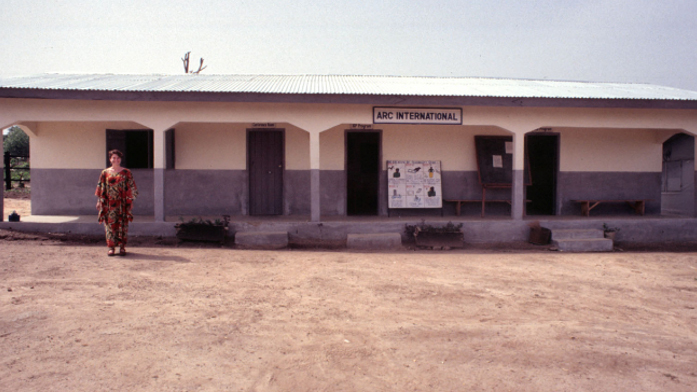The Value of Time Travel: MERS Through the Ages
Image

Tune into the MERS 3rd Edition virtual launch on April 27!
Help!
In 2002, for the first time in my life, I stepped into an office in Kissidougou, Guinea as the team leader, specifically the new Livelihoods Program Coordinator. I walked into a small cement block office in a converted house (I think it used to be a bedroom) with fading whitewashed paint, a scarred wooden desk with broken drawers, and four Sierra Leonean, Guinean, and Liberian staff looking at me, pens poised over notebooks, ready to find out what we were going to do.
You see, they had been running a lending programing in the three refugee camps, and it had been closed for several months due to lack of staff, oversight, and a general unease about “lending to refugees.” Now, here was the new boss, and what was she going to do? How was she going to figure out all the challenges that were swirling around the lending, vocational, and businesses training programs? And as I sat there, I wished with all my heart that I was a WASH engineer. “How come I don’t have a Sphere guideline, so I can just get the right number of liters per day and a get my waterpoints working? What am I supposed to do!”

Photo: Standing outside the new loan offices in Boreah Camp in 2004. Credit: Sara Ward
The MERS and Time Travel
This experience will always be my touchpoint for the why, what, and for whom of the Minimum Economic Recovery Standards. The MERS, as they are known, are now in their third edition, and SEEP has been supporting them since 2007. Since their beginnings, shifting groups of financial service and economic recovery experts and practitioners have been using and updating these standards. In 2010 they became official Sphere companions (now a part of the Humanitarian Standards Partnership, or HSP) and were instrumental in developing UNHCR’s new livelihood policies and guidelines. You will be happy to know that, back in 2002, despite my terror, and with the support of the best local staff ever assembled, we restarted the program. It eventually became the model of refugee loan programs for years to come (and we got a fancy new camp-based office to boot!).
This year, the MERS have been updated to include cash-based programing, adaptive management, new employment standards, and the recognition of our work with complex market systems. While no set of standards is perfect, or even perfectible, if I could reach back through time to that woman in the cement block office, I would hand her this book (we did not really have online versions back then). The value of the joint knowledge of senior professionals, the agreement of the field, and a concise set of standards, actions, and guidance around supporting people, marketplaces, and market systems in crisis would have been a godsend.
Flying Robots
Yet even as the MERS 3rd Edition is published, I am already wondering what the next mountain to climb will be? Who is sitting 15 years in the future, holding the perfect unknown resource for us now? Have we figured out how to scale microinsurance in thin markets? Has the internet economy created huge employment opportunities across the poorest regions of Africa and Asia with wireless power and internet access? Are we using flying, swimming and walking robots to map, assess, and even respond in crisis and conflict?
We are working on apps for humanitarian guidelines and online learning courses. Back in 2002, we could not have imagined running entire humanitarian relief efforts remotely via mobile phones and POS machines, yet the program coordinators now take these modalities in stride. I believe that while we sometimes don’t see it, and there is always a way to be and do better, we have made tremendous strides in our work since the first edition of MERS in 2009.
Our thinking around market systems and livelihoods has advanced and we are an integral part of the response and recovery. We use new modalities and adaptive management practices to be nimbler, get specific, and respond quickly to shifting markets in the shock, recovery, stress, shock cycle. And we are recognizing that the ability of households, communities, and systems to weather the many shocks and stresses they face may be one of the most critical things we can support. As the new the Minimum Economic Recovery Standards are published, I look forward to the work and innovation that our colleagues across the globe will bring in the next 15 years.
For more information and resources on the MERS standards and livelihoods and recovery, see here.


